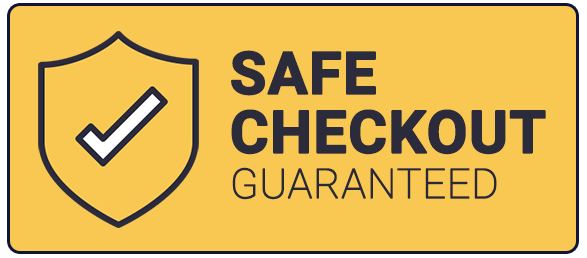|
A recent study by the American Heart Association and the National Institutes of Health indicated that gender may determine whether or not someone receives CPR for bystanders.
This is the first study to examine gender differences in receiving heart help from the public versus professional responders. The study, involved nearly 20,000 cases around the country and reported that only 39 percent of women suffering cardiac arrest in public received CPR as opposed to 45 percent of men. Although it may not be a large discrepancy; there is still a difference. Men were also 23 percent more likely to survive from a cardiac arrest in public. Empirical research has suggested no none cause as to why rescuers were less likely to assist women and did not find a gender difference in CPR rates for people suffering from cardiac arrest at home. Check out the article. http://www.ajc.com/news/health-med-fit-science/women-less-likely-than-men-get-cpr-from-bystanders-and-more-likely-die-study-suggests/Qcpnz4Fq0ijCDZ8xDpsgrK/
Comments
The American Heart Association (AHA) just recently released updated their 2017 CPR guidelines specifically for kids and 911 dispatchers.The AHA is now recommending 911 assisted compression-only CPR instructions when cardiac arrest is suspected. The use of telephone CPR not only provides assistance to the bystander not trained in CPR/AED/First Aid but also reminds the CPR-trained rescuer of the importance of provide high-quality CPR in a stressful situation. Unfortunately, only one-half of the 911 dispatchers in the US provide telephone CPR, which has been identified as a critical intervention in the chain of survival for out-of-hospital cardiac arrest.
The updated AHA guidelines reinforce the need for compressions and rescue breaths during CPR for people younger than 18. More than 7,000 children die from an out-of-hospital cardiac arrest annually. In most cases, it is the result of a lack of oxygen, and rescue breaths can keep oxygenated blood flowing through the system. Most people who experience cardiac arrest at home, work or in a public location die because they don’t receive immediate CPR from someone on the scene. As a bystander, it is important to not be afraid. Part of this increased confidence can come from increased knowledge and awareness which can be optimized through training and recurrent training on AHA CPR/AED/First Aid guidelines. The following is the link to the AHA updated guidelines for first responders and laymen rescuers. A must read for everyone. https://eccguidelines.heart.org/index.php/circulation/cpr-ecc-guidelines-2/ |
AuthorDr. Tracy A. Jones is the CEO of Help-A-Heart CPR, LLC and an American Heart Association, ASHI, and American Red Cross Master Program Trainer, Instructor, & AHA Faculty Member located in San Antonio, Texas. Archives
June 2024
Categories |
Help-A-Heart CPR, LLC | 1747 Citadell Plaza Suite 101 | San Antonio, Texas 78209 | (210) 380-5344 | [email protected]
Copyright © Help-A-Heart CPR, LLC 2024
100% Certification Acceptance
We promise your employer, school, or agency will accept the certification card we issue to you. If there is a question of acceptance or validity, simply send us an email at [email protected] with full details. We will reach out to the individual/entity and provide accreditation information. If still there’s a question, we will provide you with a full refund of your class fee. It’s that simple.
We promise your employer, school, or agency will accept the certification card we issue to you. If there is a question of acceptance or validity, simply send us an email at [email protected] with full details. We will reach out to the individual/entity and provide accreditation information. If still there’s a question, we will provide you with a full refund of your class fee. It’s that simple.
|
Communities Served
ALABAMA: Birmingham
ARKANSAS: Fayetteville, Hot Springs, Jonesboro, Little Rock NEW MEXICO: Albuquerque TENNESSEE: Knoxville TEXAS: Amarillo, Arlington, Austin, Bandera, Bastrop, Boerne, Brownsville, Comfort, Converse, Corpus Christi, Dallas/Ft. Worth, Del Rio, Dripping Springs, El Paso, Floresville, Fredericksburg, Georgetown, Harlingen, Houston, Junction, Katy, Kerrville, Kingsville, Kingwood, Laredo, Lubbock, Lufkin, McAllen, Midland, New Braunfels, Odessa, Pleasanton, Round Rock, San Angelo, San Marcos, Schertz, Seguin, Taylor, Temple, Texarkana, Tyler, Universal City, Victoria, Waco, The Woodlands |
Why Choose Help-A-Heart CPR?
1. Flexible Scheduling
2. On and Off Location Training Available 3. Casual, Fun Atmosphere 4. Best Price Guarantee 5. All Instructors are AHA and/or ARC certified 6. 5 Star Google Reviews 7. Blended Learning (Online & Skills Check) Available 8. Meets OSHA & College CPR Requirements 9. Get Certified Within 3-4 Hours 10.Certification Is Good For Two Years 11. Official AHA/ARC/ASHI Training Site 12. High Quality Safety Training! |









